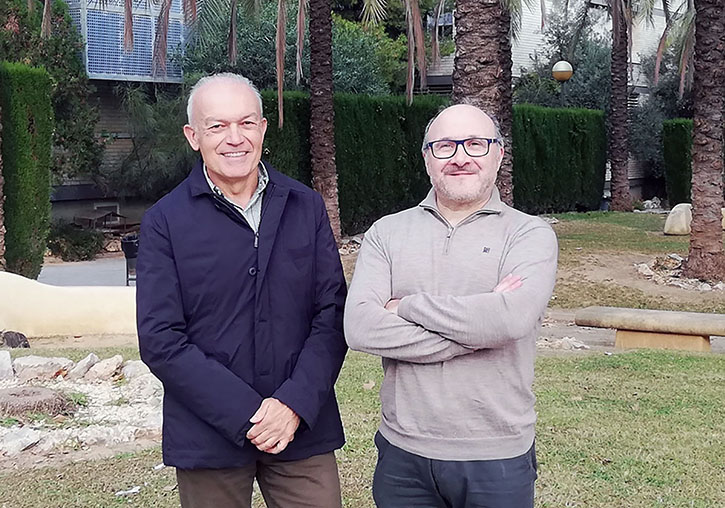
An international research team with prominent participation from the University of Valencia has discovered that, in the process of expression of genetic information, some proteins make a round trip aboard messenger RNA from the nucleus to the cytoplasm and vice versa, and exchange essential information so that cells can survive environmental changes. The work appears published in Nature Communications.
In human cells and those of all eukaryotes, such as yeast, the genetic information is located in the nucleus. For this information to be used in the processes that keep the cell alive — that is, in the expression of the genome — the DNA must be copied into RNA, which will carry the message to the cytoplasm, outside the cell nucleus, where it will be used to make proteins. The RNA will be destroyed after having fulfilled its messenger mission, since it is not stable like DNA. Just as the genome is stable and heritable, the expression of genetic information varies continuously because the circumstances that cells face are also variable. And this allows living beings to survive in a changing environment.
Until now it was thought that messenger RNA started from the nucleus, carrying with it instructions for its function in the cytoplasm, and lost communication with the genome. The expression of genetic information was thus unidirectional from DNA to RNA, from the nucleus to the cytoplasm. However, the international research team in which the group led by José E, Pérez-Ortín, a researcher at the Institute of Biotechnology and Biomedicine (BioTecMed) of the University of Valencia participates, proposed years ago that the genome also receives news from the cytoplasm about what is happening to the RNA in real time and that this information is used to decide if it needs to make more or less RNA.
In the work published in Nature Communications, the team has discovered, using yeast as a study model, that information about the situation of the RNA in the cytoplasm is transmitted by some proteins that travel with the messenger RNA from the nucleus to the cytoplasm and return to the nucleus once RNA is destroyed, this time autonomously without using the RNA as a carrier. In this way it can be said that the process of expression of genetic information is circular, and not linear as previously thought. This process of reciprocal exchange of information is essential for cells to respond to and survive environmental changes and stress.
The work has been led by Mordechai Choder’s group, from the Technion-Israel Institute of Technology. The Yeast Functional Genomics group of the University of Valencia, at BioTecMed, has been responsible for carrying out the different genomic techniques that have made it possible to demonstrate that the phenomenon of circular gene expression has a global character and affects all the cell’s genes.
Reference:
RNA-controlled nucleocytoplasmic shuttling of mRNA decay factors regulates mRNA synthesis and a novel mRNA decay pathway. Shiladitya Chattopadhyay, Jose García-Martínez, Gal Haimovich, Jonathan Fischer, Aya Khwaja, Oren Barkai, Silvia Gabriela Chuartzman, Maya Schuldiner, Ron Elran, Miriam I. Rosenberg, Shira Urim, Shubham Deshmukh, Katherine E. Bohnsack, Markus T. Bohnsack, Jose E. Pérez-Ortin & Mordechai Choder. Nature Communications volumen 13, Article number: 7184 (2022)
Links:
.png)






